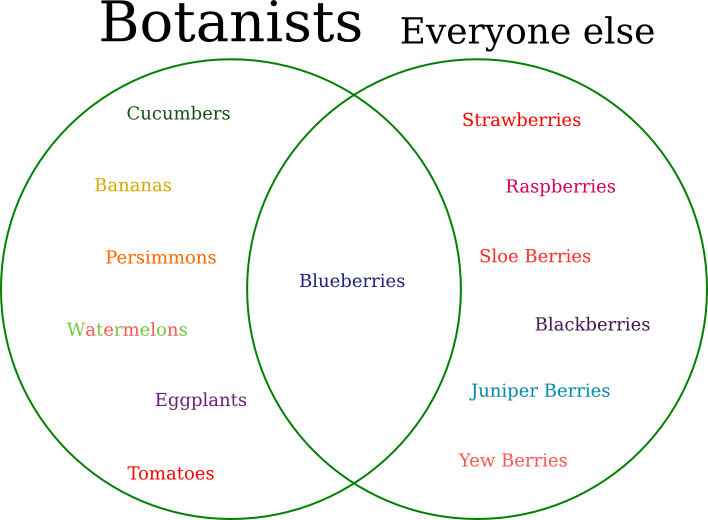Mark Dominus (陶敏修)
mjd@pobox.com

Archive:
| 2025: | JFMAMJ |
| JAS | |
| 2024: | JFMAMJ |
| JASOND | |
| 2023: | JFMAMJ |
| JASOND | |
| 2022: | JFMAMJ |
| JASOND | |
| 2021: | JFMAMJ |
| JASOND | |
| 2020: | JFMAMJ |
| JASOND | |
| 2019: | JFMAMJ |
| JASOND | |
| 2018: | JFMAMJ |
| JASOND | |
| 2017: | JFMAMJ |
| JASOND | |
| 2016: | JFMAMJ |
| JASOND | |
| 2015: | JFMAMJ |
| JASOND | |
| 2014: | JFMAMJ |
| JASOND | |
| 2013: | JFMAMJ |
| JASOND | |
| 2012: | JFMAMJ |
| JASOND | |
| 2011: | JFMAMJ |
| JASOND | |
| 2010: | JFMAMJ |
| JASOND | |
| 2009: | JFMAMJ |
| JASOND | |
| 2008: | JFMAMJ |
| JASOND | |
| 2007: | JFMAMJ |
| JASOND | |
| 2006: | JFMAMJ |
| JASOND | |
| 2005: | OND |
Subtopics:
| Mathematics | 245 |
| Programming | 99 |
| Language | 95 |
| Miscellaneous | 75 |
| Book | 50 |
| Tech | 49 |
| Etymology | 35 |
| Haskell | 33 |
| Oops | 30 |
| Unix | 27 |
| Cosmic Call | 25 |
| Math SE | 25 |
| Law | 22 |
| Physics | 21 |
| Perl | 17 |
| Biology | 16 |
| Brain | 15 |
| Calendar | 15 |
| Food | 15 |
Comments disabled
Sun, 20 Mar 2016
Technical jargon failure modes
Technical jargon is its own thing, intended for easy communication between trained practitioners of some art, but not necessarily between anyone else.
Jargon can be somewhat transparent, like the chemical jargon term “alcohol”. “Alcohol” refers to a large class of related chemical compounds, of which the simplest examples are methyl alcohol (traditionally called “wood alcohol”) and ethyl alcohol (the kind that you get in your martini). The extension of “alcohol” to the larger class is suggestive and helpful. Someone who doesn't understand the chemical jargon usage of “alcohol” can pick it up by analogy, and even if they don't they will probably have something like the right idea. A similar example is “aldehyde”. An outsider who hears this for the first time might reasonably ask “does that have something to do with formaldehyde?” and the reasonable answer is “yes indeed, formaldehyde is the simplest example of an aldehyde compound.” Again the common term is adapted to refer to the members of a larger but related class.
An opposite sort of adaptation is found in the term “bug”. The common term is extremely broad, encompassing all sorts of terrestrial arthropods, including mosquitoes, ladybugs, flies, dragonflies, spiders, and even isopods (“pillbugs”) and centipedes and so forth. It should be clear that this category is too large and heterogeneous to be scientifically useful, and the technical use of “bug” is much more restricted. But it does include many creatures commonly referred to as bugs, such as bed bugs, waterbugs, various plant bugs, and many other flat-bodied crawling insects.
Mathematics jargon often wanders in different directions. Some mathematical terms are completely opaque. Nobody hearing the term “cobordism” or “simplicial complex” or “locally compact manifold” for the first time will think for an instant that they have any idea what it means, and this is perfect, because they will be perfectly correct. Other mathematical terms are paradoxically so transparent seeming that they reveal their opacity by being obviously too good to be true. If you hear a mathematician mention a “field” it will take no more than a moment to realize that it can have nothing to do with fields of grain or track-and-field sports. (A field is a collection of things that are number-like, in the sense of having addition, subtraction, multiplication, and division that behave pretty much the way one would expect those operations to behave.) And some mathematical jargon is fairly transparent. The non-mathematician's idea of “line”, “ball”, and “cube” is not in any way inconsistent with what the mathematician has in mind, although the full technical meaning of those terms is pregnant with ramifications and connotations that are invisible to non-mathematicians.
But mathematical jargon sometimes goes to some bad places. The term “group” is so generic that it could mean anything, and outsiders often imagine that it means something like what mathematicians call a “set”. (It actually means a family of objects that behave like the family of symmetries of some other object.)
This last is not too terrible, as jargon failures go. There is a worse kind of jargon failure I would like to contrast with “bug”. There the problem, if there is a problem, is that entomologists use the common term “bug” much more restrictively than one expects. An entomologist will well-actually you to explain that a millipede is not actually a bug, but we are used to technicians using technical terms in more restrictive ways than we expect. At least you can feel fairly confident that if you ask for examples of bugs (“true bugs”, in the jargon) that they will all be what you will consider bugs, and the entomologist will not proceed to rattle off a list that includes bats, lobsters, potatoes, or the Trans-Siberian Railroad. This is an acceptable state of affairs.
Unacceptable, however, is the botanical use of the term “berry”:

It is one thing to adopt a jargon term that is completely orthogonal to common usage, as with “fruit”, where the technical term simply has no relation at all to the common meaning. That is bad enough. But to adopt the term “berry” for a class of fruits that excludes nearly everything that is commonly called a ”berry” is an offense against common sense.
This has been on my mind a long time, but I am writing about it now because I think I have found, at last, an even more offensive example.

Stonehenge is so-called because it is a place of hanging stones: “henge” is cognate with “hang”.
In 1932 archaeologists adapted the name “Stonehenge” to create the word “henge” as a generic term for a family of ancient monuments that are similar to Stonehenge.
Therefore, if there were only one thing in the whole world that ought to be an example of a henge, it should be Stonehenge.
However, Stonehenge is not, itself, a henge.
Stonehenge is not a henge.
STONEHENGE IS NOT A HENGE.
Stonehenge is not a henge. … Technically, [henges] are earthwork enclosures in which a ditch was dug to make a bank, which was thrown up on the outside edge of the ditch.
— Michael Pitts, Hengeworld, pp. 26–28.
“Henge” may just be the most ineptly coined item of technical jargon in history.
[ Addendum 20161103: Zimbabwe's Great Dyke is not actually a dyke. ]
[ Addendum 20190502: I found a mathematical example that is approximately as bad as the worst examples on this page. ]
[Other articles in category /lang] permanent link


